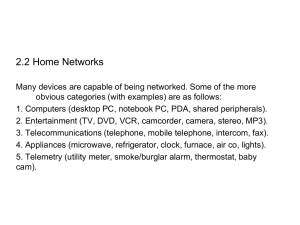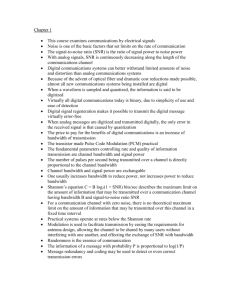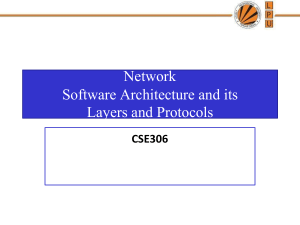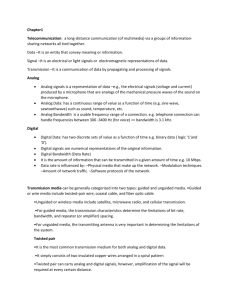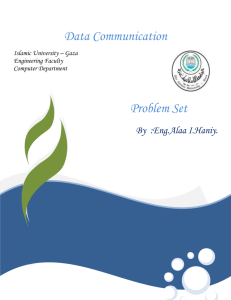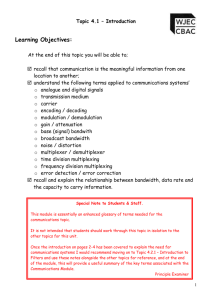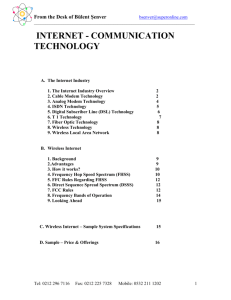Week 11
advertisement
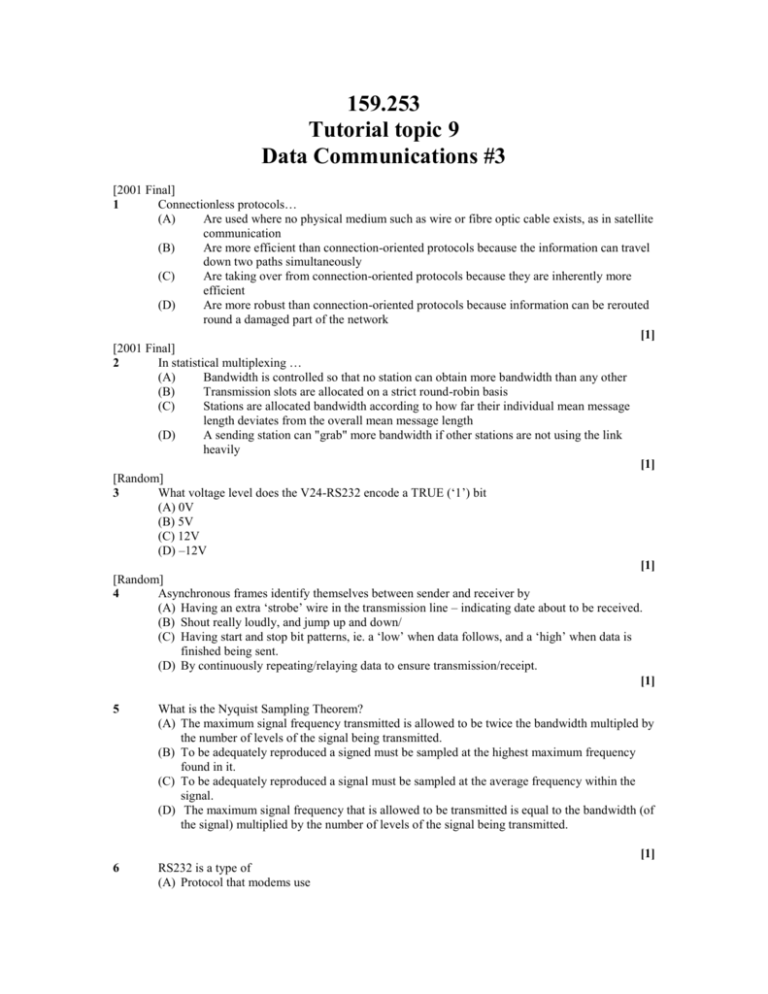
159.253 Tutorial topic 9 Data Communications #3 [2001 Final] 1 Connectionless protocols… (A) Are used where no physical medium such as wire or fibre optic cable exists, as in satellite communication (B) Are more efficient than connection-oriented protocols because the information can travel down two paths simultaneously (C) Are taking over from connection-oriented protocols because they are inherently more efficient (D) Are more robust than connection-oriented protocols because information can be rerouted round a damaged part of the network [1] [2001 Final] 2 In statistical multiplexing … (A) Bandwidth is controlled so that no station can obtain more bandwidth than any other (B) Transmission slots are allocated on a strict round-robin basis (C) Stations are allocated bandwidth according to how far their individual mean message length deviates from the overall mean message length (D) A sending station can "grab" more bandwidth if other stations are not using the link heavily [1] [Random] 3 What voltage level does the V24-RS232 encode a TRUE (‘1’) bit (A) 0V (B) 5V (C) 12V (D) –12V [1] [Random] 4 Asynchronous frames identify themselves between sender and receiver by (A) Having an extra ‘strobe’ wire in the transmission line – indicating date about to be received. (B) Shout really loudly, and jump up and down/ (C) Having start and stop bit patterns, ie. a ‘low’ when data follows, and a ‘high’ when data is finished being sent. (D) By continuously repeating/relaying data to ensure transmission/receipt. [1] 5 What is the Nyquist Sampling Theorem? (A) The maximum signal frequency transmitted is allowed to be twice the bandwidth multipled by the number of levels of the signal being transmitted. (B) To be adequately reproduced a signed must be sampled at the highest maximum frequency found in it. (C) To be adequately reproduced a signal must be sampled at the average frequency within the signal. (D) The maximum signal frequency that is allowed to be transmitted is equal to the bandwidth (of the signal) multiplied by the number of levels of the signal being transmitted. 6 RS232 is a type of (A) Protocol that modems use [1] (B) Protocol that computers use to communicate with their ports (C) Cable that connects a computer to a printer (D) Port/Cable that is used by modems [1] 7 What system following system could closely model Frequency Division Multiplexing (A) A router redirecting packets to destinations (B) A rock concert (C) A radio broadcast (D) A telephone exchange [1] 8 Statistical Multiplexing (A) Is hardly ever used as it is the least efficient compared to TDM and FDM (B) Sends packets with destination addresses attached to them (C) Can be dangerous to use, as a sender can overflow the statistical-multiplexing buffer (used to queue up information to be encoded and transmitted). (D) Is something boring a statistician does [1] 9 An internet (A) Is more robust than connection-oriented networks, as if a node fails, data can still be routed to destination (B) Is less robust than a connection-oriented network, as if a node fails, data transmission to the receiver will have to be halted. (C) What we call the World Wide Web (D) Can only be brought into existence with the use of RS232 cabling. [1] 10 TCP (A) Stands for Transmission Control Protocol, and has IP (Internet Protocol) as its delivery service. (B) Stands for Transmission Control Packet, and is IP’s delivery system (C) Is a protocol that is unreliable (D) Stands for Transmission Control Protocol, and is a delivery system for IP’s. 11 Compare and contrast internet with a connection oriented network service such as X.25 [5] 12 If a data encoder employs a x4 + x2 + 1 cyclic redundancy function, find out the error bits that would have to be added to the code 1110011001111001 to ensure a sound error detection at the receiver. [8]
